Nobel physics prize awarded to three for topology work (Update 6)
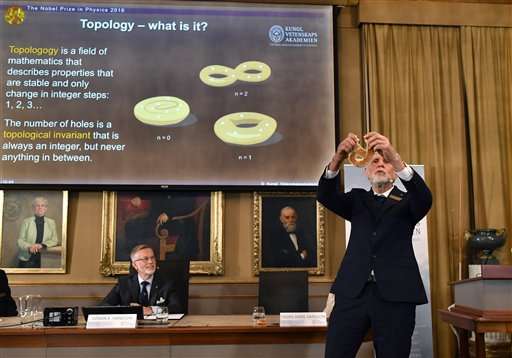
How is a doughnut like a coffee cup? The answer helped three British-born scientists win the Nobel prize in physics Tuesday.
Their work could help lead to more powerful computers and improved materials for electronics.
David Thouless, Duncan Haldane and Michael Kosterlitz, who are now affiliated with universities in the United States, were honored for work in the 1970s and '80s that shed light on strange states of matter.
"Their discoveries have brought about breakthroughs in the theoretical understanding of matter's mysteries and created new perspectives on the development of innovative materials," the Royal Swedish Academy of Sciences said.
Thouless, 82, is a professor emeritus at the University of Washington. Haldane, 65, is a physics professor at Princeton University in New Jersey. Kosterlitz, 73, is a physics professor at Brown University in Providence, Rhode Island, and currently a visiting lecturer at Aalto University in Helsinki.
The 8 million kronor ($930,000) award was divided with one half going to Thouless and the other to Haldane and Kosterlitz.
They investigated strange states of matter like superconductivity, the ability of a material to conduct electricity without resistance.
Their work called on an abstract mathematical field called topology, which presents a particular way to describe some properties of matter. In this realm, a doughnut and a coffee cup are basically the same thing because each contains precisely one hole. Topology describes properties that can only change in full steps; you can't have half a hole.
"Using topology as a tool, they were able to astound the experts," the academy said.
For example, in the 1970s, Kosterlitz and Thouless showed that very thin layers of material—essentially containing only two dimensions rather than three—could undergo fundamental changes known as phase transitions. One example is when a material is chilled enough that it can start showing superconductivity.
Scientists had thought phase changes were impossible in just two dimensions, but the two men showed that changes do occur and that they were rooted in topology.
"This was a radically new way of looking at phases of matter," said Sankar Das Sarma, a physicist at the University of Maryland in College Park.
"Now everywhere we look we find that topology affects the physical world," he said.
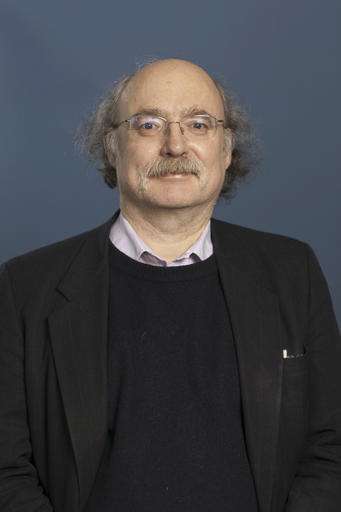
Haldane was cited for theoretical studies of chains of magnetic atoms that appear in some materials. He said he found out about the prize through an early morning telephone call.
"My first thought was someone had died," he told The Associated Press. "But then a lady with a Swedish accent was on the line. It was pretty unexpected."
Kosterlitz, a dual U.K.-U.S. citizen, said he got the news in a parking garage while heading to lunch in Helsinki.
"I'm a little bit dazzled. I'm still trying to take it in," he told AP.
Michael Thouless, son of David Thouless, told the AP his father wasn't able to give interviews because of medical reasons. In a statement Michael Thouless said his father "was moved and honored to learn of the Nobel Prize, and he was very happy to hear that he would share it with Mike Kosterlitz and Duncan Haldane."
Nobel committee member David Haviland said this year's prize was more about theoretical discoveries even though they may result in practical applications.
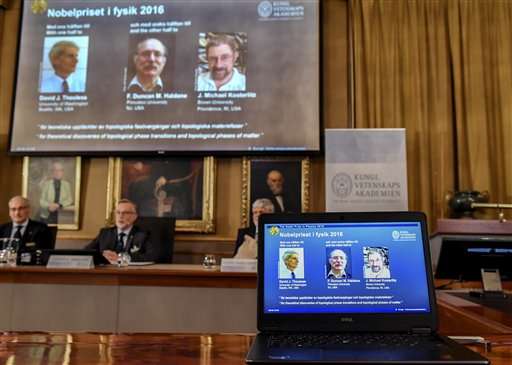
"These theoreticians have come up with a description of these materials using topological ideas, which have proven very fruitful and has led to a lot of ongoing research about material properties," he said.
Haldane said the award-winning research is just starting to have practical applications.
"The big hope is that some of these new materials could lead to quantum computers and other new technology," he said.
Quantum computers could be powerful tools, but Kosterlitz was not so sure about the prospects for developing them.
"I've been waiting for my desktop quantum computer for years, but it's still showing no signs of appearing," he said. "At the risk of making a bad mistake, I would say that this quantum computation stuff is a long way from being practical."
This year's Nobel Prize announcements started Monday with the medicine award going to Japanese biologist Yoshinori Ohsumi for discoveries on autophagy, the process by which a cell breaks down and recycles content.
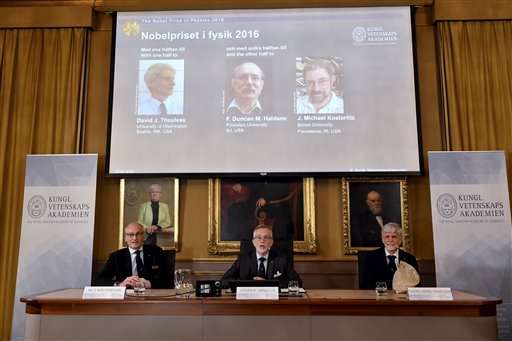
The chemistry prize will be announced on Wednesday and the Nobel Peace Prize on Friday. The economics and literature awards will be announced next week.
Besides the prize money, the winners get a medal and a diploma at the award ceremonies on Dec. 10, the anniversary of prize founder Alfred Nobel's death in 1896.
Nobel physics prize: A look at the 3 winners, their feats
Three British-born scientists who have conducted extensive research in the United States won this year's Nobel Prize in physics on Tuesday.
They are David Thouless, 82, a professor emeritus at the University of Washington; Duncan Haldane, 65, a physics professor at Princeton University in New Jersey, and 73-year-old Michael Kosterlitz of Brown University in Rhode Island.
Here's a look at why they won and the importance of their achievements:
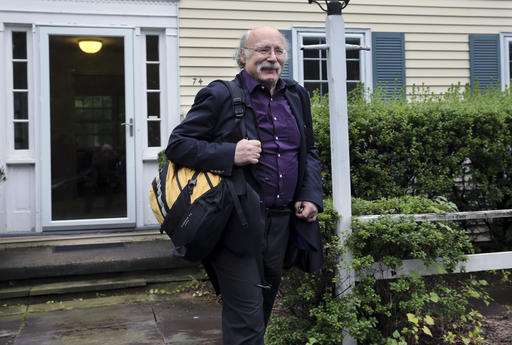
___
SIGNIFICANCE
Their research broke new ground in the 1970s and 1980s and is being honored decades later as recognition of its lasting impact.
The Royal Swedish Academy of Sciences said the trio "opened the door" to a new, previously hidden world in which matter takes unusual states.
The academy said their elegant theoretical discoveries had inspired scientists in the intervening years. They are credited with groundbreaking work revealing the secrets of exotic matter such as superconductors, materials that conduct electricity with no loss to resistance.
This may lead to the development of new materials for use in advanced electronics or computers.
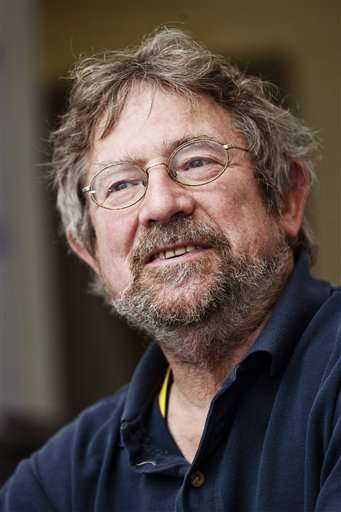
___
REACTION
A very pleased Haldane took several questions by phone link from journalists covering the Nobel ceremony.
He said the laureates "stumbled" onto the discoveries that would bring them global recognition decades later and said that was often the way new finds are made.
He also paid tribute to the motivation provided by Philip Anderson, an earlier Nobel winner who was one of his professors at Cambridge University.
Haldane said he was "very surprised and very gratified" by the award.
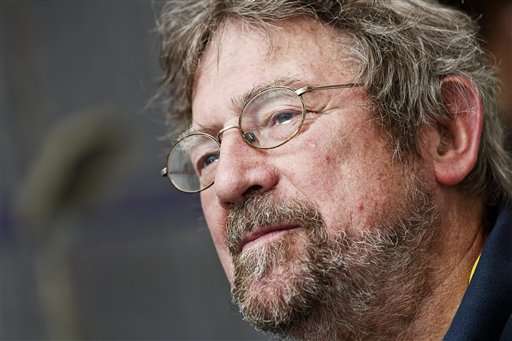
Kosterlitz told The Associated Press he was "a little bit dazzled. I'm still trying to take it in." He said he was in his 20s when the research began and that his "complete ignorance" helped because he wasn't held back by preconceived notions.
"I was young and stupid enough to take it on," he said.
___
PRIZE
The Nobel Prize carries with it an 8 million kronor ($930,000) prize in addition to a medal and a diploma that is handed out at the award ceremonies each December.
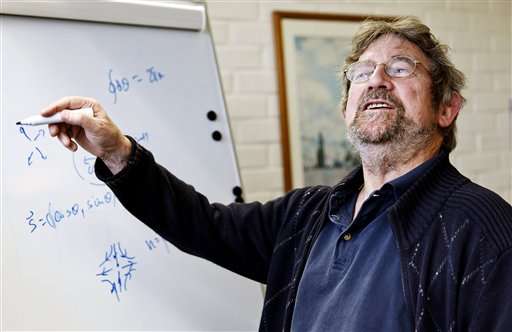
Nobel Committee Press Release: The Nobel Prize in Physics 2016
They revealed the secrets of exotic matter
This year's Laureates opened the door on an unknown world where matter can assume strange states. They have used advanced mathematical methods to study unusual phases, or states, of matter, such as superconductors, superfluids or thin magnetic films. Thanks to their pioneering work, the hunt is now on for new and exotic phases of matter. Many people are hopeful of future applications in both materials science and electronics.
The three Laureates' use of topological concepts in physics was decisive for their discoveries. Topology is a branch of mathematics that describes properties that only change step-wise. Using topology as a tool, they were able to astound the experts. In the early 1970s, Michael Kosterlitz and David Thouless overturned the then current theory that superconductivity or suprafluidity could not occur in thin layers. They demonstrated that superconductivity could occur at low temperatures and also explained the mechanism, phase transition, that makes superconductivity disappear at higher temperatures.
In the 1980s, Thouless was able to explain a previous experiment with very thin electrically conducting layers in which conductance was precisely measured as integer steps. He showed that these integers were topological in their nature. At around the same time, Duncan Haldane discovered how topological concepts can be used to understand the properties of chains of small magnets found in some materials.
We now know of many topological phases, not only in thin layers and threads, but also in ordinary three-dimensional materials. Over the last decade, this area has boosted frontline research in condensed matter physics, not least because of the hope that topological materials could be used in new generations of electronics and superconductors, or in future quantum computers. Current research is revealing the secrets of matter in the exotic worlds discovered by this year's Nobel Laureates.
-
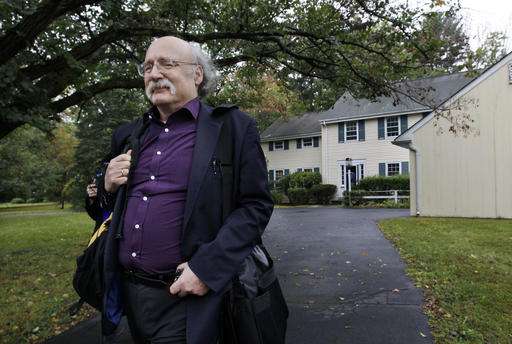
Princeton University professor F. Duncan Haldane leaves his home after it was announced that he has been awarded the 2016 Nobel Prize in Physics early Tuesday, Oct. 4, 2016, in Princeton, N.J. Haldane shares the award with fellow scientists David Thouless and Michael Kosterlitz. (AP Photo/Mel Evans) -
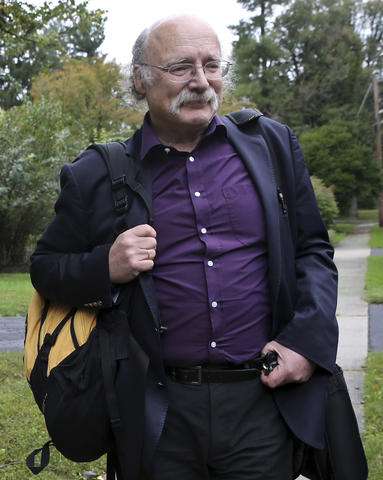
Princeton University physics professor F. Duncan Haldane leaves his home after it was announced that he has been awarded the 2016 Nobel Prize in Physics early Tuesday, Oct. 4, 2016, in Princeton, N.J. Haldane shares the award with fellow scientists David Thouless and Michael Kosterlitz. (AP Photo/Mel Evans) -
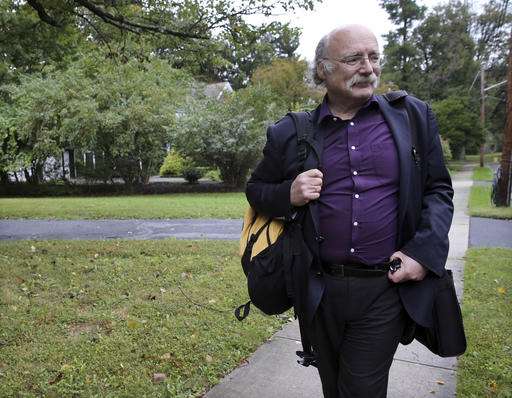
Princeton University physics professor F. Duncan Haldane leaves his home after it was announced that he has been awarded the 2016 Nobel Prize in Physics early Tuesday, Oct. 4, 2016, in Princeton, N.J. Haldane shares the award with fellow scientists David Thouless and Michael Kosterlitz. (AP Photo/Mel Evans) -
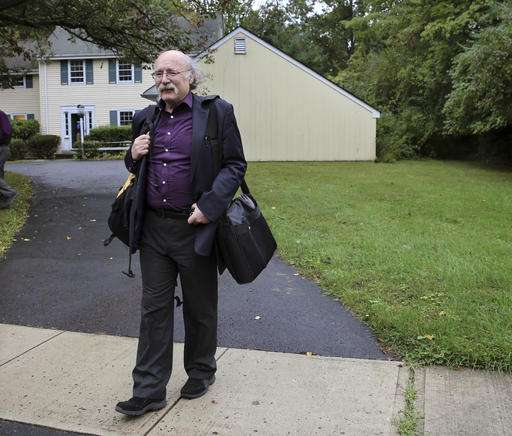
Princeton University physics professor F. Duncan Haldane leaves his home after it was announced that he has been awarded the 2016 Nobel Prize in Physics early Tuesday, Oct. 4, 2016, in Princeton, N.J. Haldane shares the award with fellow scientists David Thouless and Michael Kosterlitz. (AP Photo/Mel Evans) -
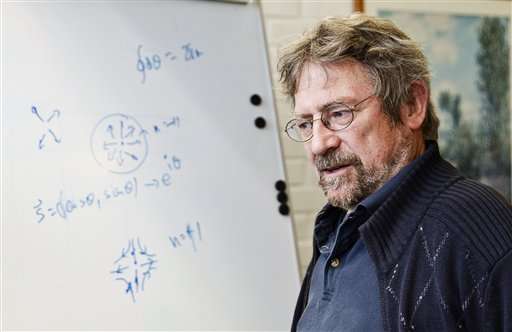
John Michael Kosterlitz, one of the scientists that has been awarded the Nobel Prize in physics, poses for a photo at Aalto University in Espoo, Finland, Tuesday Oct. 4, 2016. The Royal Swedish Academy of Sciences has cited David Thouless, Duncan Haldane and Michael Kosterlitz for "theoretical discoveries of topological phase transitions and topological phases of matter." (Roni Rekomaa/Lehtikuva via AP) -
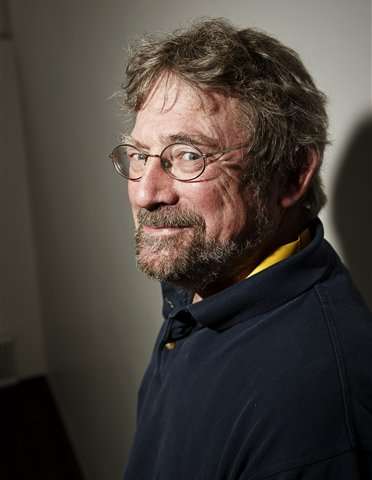
John Michael Kosterlitz, one of the scientists that has been awarded the Nobel Prize in physics, poses for a photo at Aalto University in Espoo, Finland, Tuesday Oct. 4, 2016. The Royal Swedish Academy of Sciences has cited David Thouless, Duncan Haldane and Michael Kosterlitz for "theoretical discoveries of topological phase transitions and topological phases of matter." (Roni Rekomaa/Lehtikuva via AP) -
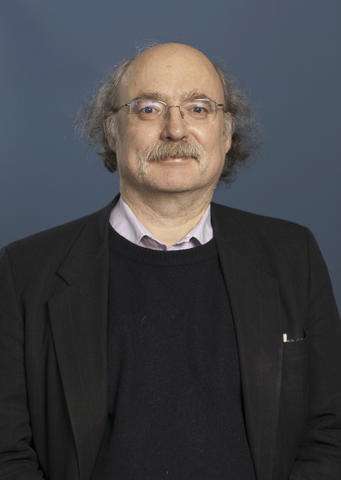
This undated photo provided by Princeton University shows Duncan Haldane, who is one of the scientists that has been awarded the Nobel Prize in physics announced Tuesday, Oct. 4, 2016. The Royal Swedish Academy of Sciences has cited David Thouless, Haldane and Michael Kosterlitz for "theoretical discoveries of topological phase transitions and topological phases of matter." (Denise Applewhite/Princeton University, Office of Communications via AP) -
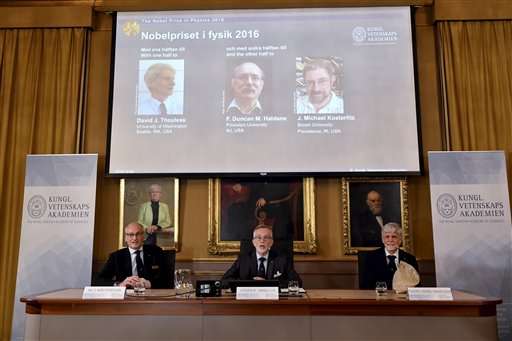
The Royal Academy of Sciences members, from left, Professor Nils Martensson, Professor Goran K Hansson and Professor Thomas Hans Hansson reveal the winners of the Nobel Prize in physics, at the Royal Swedish Academy of Sciences, in Stockholm, Sweden, Tuesday, Oct. 4, 2016. David Thouless, Duncan Haldane and Michael Kosterlitz have won the Nobel physics prize. Nobel jury praises physics winners for 'discoveries of topological phase transitions and topological phases of matter'. (Anders Wiklund /TT via AP) -
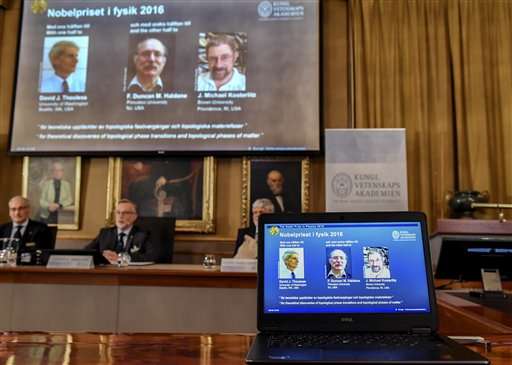
The Royal Academy of Sciences members, from left, Professor Nils Martensson, Professor Goran K Hansson and Professor Thomas Hans Hansson reveal the winners of the Nobel Prize in physics, at the Royal Swedish Academy of Sciences, in Stockholm, Sweden, Tuesday, Oct. 4, 2016. David Thouless, Duncan Haldane and Michael Kosterlitz have won the Nobel physics prize. Nobel jury praises physics winners for 'discoveries of topological phase transitions and topological phases of matter'. (Anders Wiklund /TT via AP) -
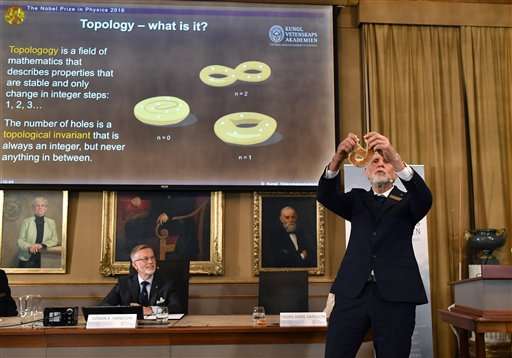
Professor Thors Hans Hansson gives a demonstration, after revealing the winners of the Nobel Prize in physics, at the Royal Swedish Academy of Sciences, in Stockholm, Sweden, Tuesday, Oct. 4, 2016. David Thouless, Duncan Haldane and Michael Kosterlitz have won the Nobel physics prize. Nobel jury praises physics winners for 'discoveries of topological phase transitions and topological phases of matter'. (Anders Wiklund /TT via AP) -
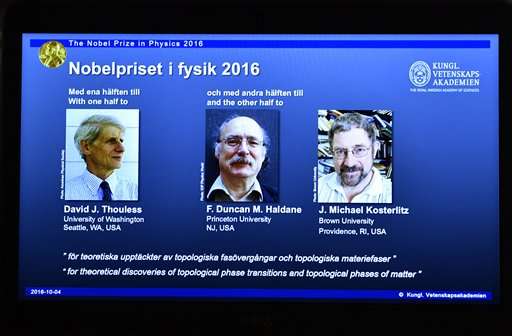
A overhead projector displays the photos of the winners of the Nobel Prize in physics, at the Royal Swedish Academy of Sciences, in Stockholm, Sweden, Tuesday, Oct. 4, 2016. David Thouless, Duncan Haldane and Michael Kosterlitz have won the Nobel physics prize. Nobel jury praises physics winners for 'discoveries of topological phase transitions and topological phases of matter'. (Anders Wiklund /TT via AP)
More information: www.nobelprize.org/nobel_prize … sics/laureates/2016/
© 2016 The Associated Press. All rights reserved.

















